by Ian Skellern
The subject of flipping usually generates considerable debate on Quill & Pad, especially in relation to the Patek Philippe Nautilus and specific Rolex models; however, not being a serious (or flippant) collector of popular watches, I’d never really given flipping much thought.
However, the subject of flipping came closer to home for me when I visited a friend after collecting my M.A.D.1 Friends Edition and he casually mentioned that he thought that many of those buying one were only doing so intending to flip them.
Now I’ve no idea as yet if he was correct in that assumption or not, though I’m sure we will learn that soon enough if/as we start to see M.A.D.1 Friends Editions turn up on secondary markets, but it did get me thinking: is flipping really so bad, and why does it generate so much angst among collectors?
And in answering those questions (for myself anyway, I’ll leave it to you decide for yourself if you agree with me), I came up with a solution that would not only eliminate, or at least significantly minimize, flipping but would also decimate the gray market.

Philippe Nautilus Ref 5711/1A-014 with green dial
Why are so many collectors upset by flipping?
First of all, I’ll admit that as I’ve never been adversely affected by flipping, I haven’t got particularly strong views on the subject. I don’t see much of a difference between an in-demand watch being sold for higher than retail when new and an older in-demand watch being sold for higher than retail at auction. I’m a believer in free markets, and if demand is higher than supply then prices will rise. It ’twas ever thus.
But the same watch aficionados who might cheer when auction prices reward a favorite independent watch like an F.P. Journe Souscription or Philippe Dufour Simplicity gnash their collective teeth when they cannot get that rare Rolex Submariner or Patek Philippe Nautilus they had set their sights on at retail.
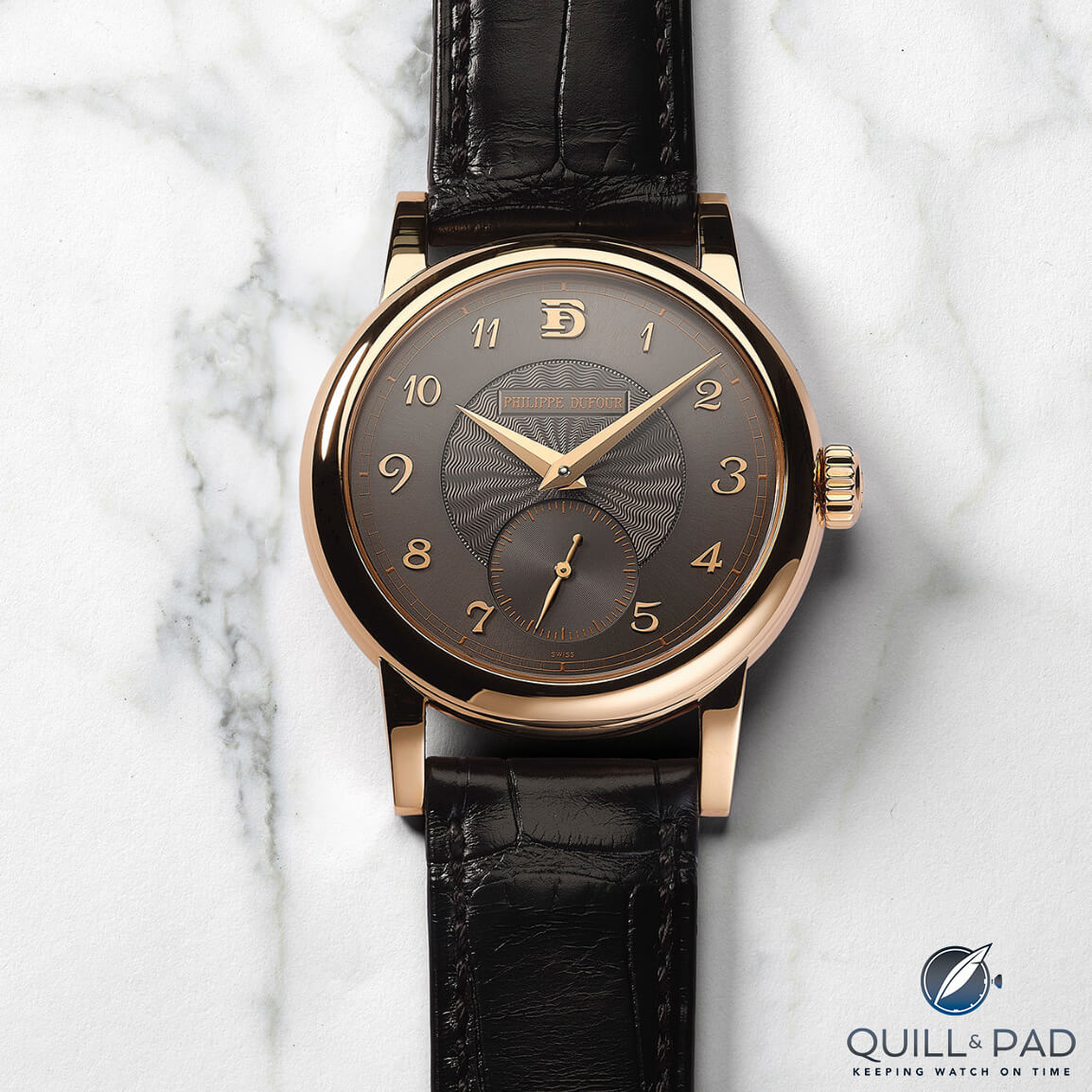
Philippe Dufour Simplicity 20th Anniversary No. 00/20 sold by Phillips (photo courtesy Phillips auctions)
I think that’s because the auction world looks a lot more transparent (rare watches go to the deepest pockets) than an authorized dealer giving (read: selling) a rare new watch at retail to somebody chosen from their secret list of clients, who then flips the watch at a seemingly exorbitant price.
At auction, anyone with enough cash and motivation has a chance of buying whatever they wish. But no matter how deep your pockets are, if you are not on the retailer’s list then you don’t even make it to the starting line. Ouch!
Two problems (flipping and gray market), one cause: unbalanced supply and demand
Flipping and the gray market aren’t two separate problems, they are both caused by the same thing: mismatched supply and demand.
Flipping is usually caused by brands forcing authorized retailers to sell in-demand watches significantly lower than their real market prices. Retailers are fully aware of the watches’ likely value but cannot profit from that directly, so they reward their bigger spending clientele with a bonus (a bit like a seat upgrade with air miles).
The gray market is caused by brands forcing authorized retailers to buy more of a less popular model than they are likely to sell, and again the brands force the retailers to sell these watches at higher prices than collectors are willing to pay. Retailers are not allowed to discount (just as they are not allowed to bump up the price for in-demand models), so they offload the watches to platforms that can discount: the gray market.
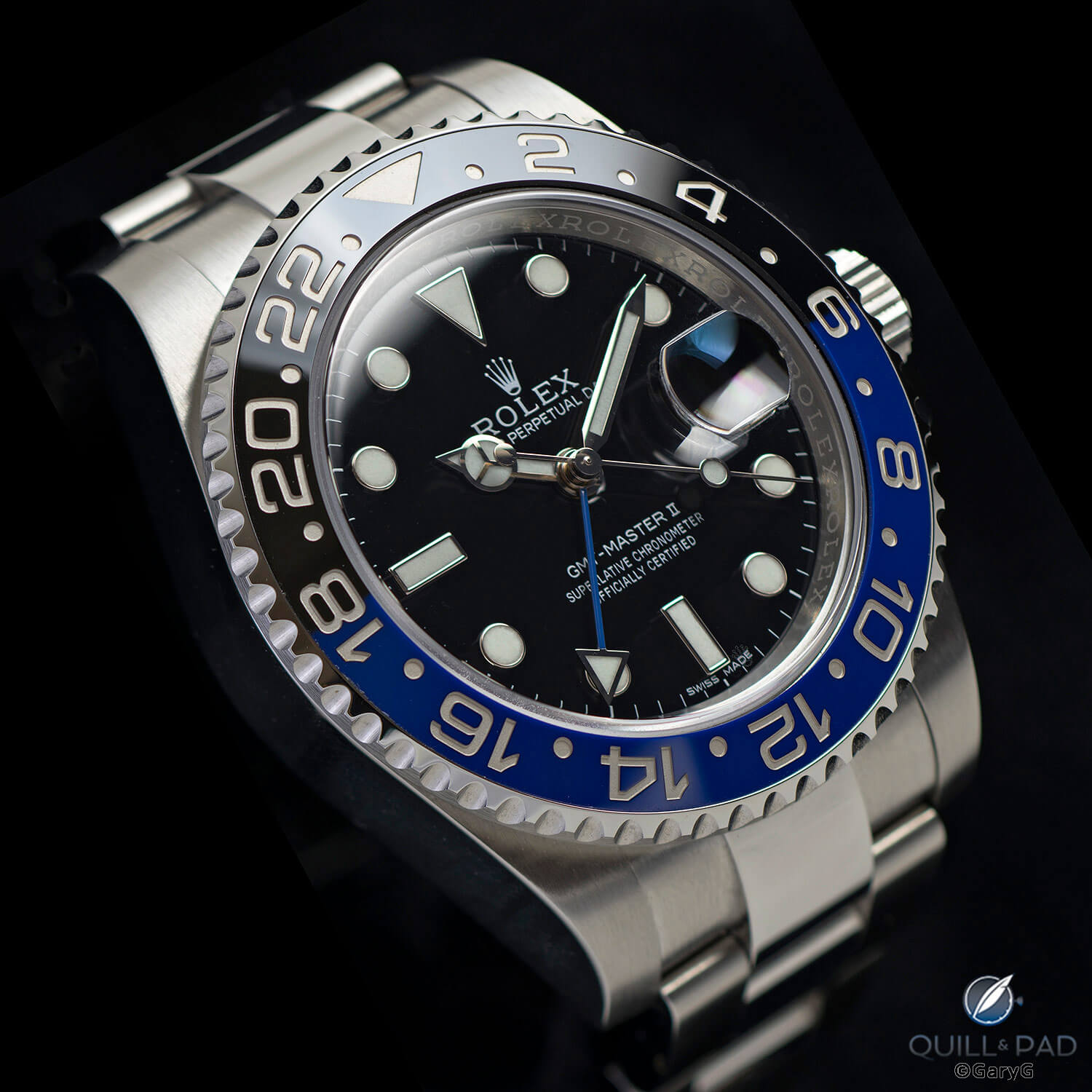
Rolex GMT-Master II “Batman”
Two problems (flipping and gray market), one solution: set the retailers free
Three years ago I wrote an article titled Online Sales Aren’t The Future Of Watch Retail, They Are The Past (Watch Brands Are Just Slow): The Future Of Online Sales Is Dynamic, The Future Of Watch Retail Is Flexible Pricing and I think that the premise still stands: why should brands still be able to fix the prices charged by retailers? The retailers have bought the watches, why shouldn’t they be able to sell their own watches at prices that work for them?
If retailers have too much stock of a watch or just want or need to generate more cash flow, why shouldn’t they be able to do that? If retailers could discount then there would be no need to offload to the gray market.
And, conversely, if a retailer has in-demand watches that they think they can sell for more than the recommended retail price, why shouldn’t the retailer be able to command the same price as a flipper?
Airlines went through this paradigm shift years ago, moving from fixed prices for seats to flexible pricing based on demand. Travelers often pay very different prices for the same seat depending on supply and demand at the time of buying their tickets, and it works because it is transparent.
It’s high time that brands allow their retailers that same transparency. The COVID-19 pandemic has turbocharged the move to online sales of watches; here’s hoping the same thing happens to flexible watch pricing.
If you agree, disagree, or are simply indifferent, let us know in the comments below.
You may also enjoy:
False Scarcity And Steel Sports Watches: A Collector’s View
Mixing Money And Watches: A Collector’s Lament On The Current State Of Our Hobby
Stainless Steel Patek Philippe Nautilus Market Madness: Thoughts On The Current Market Situation
Leave a Reply
Want to join the discussion?Feel free to contribute!








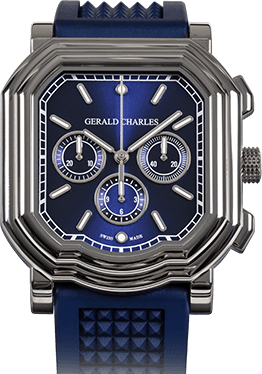
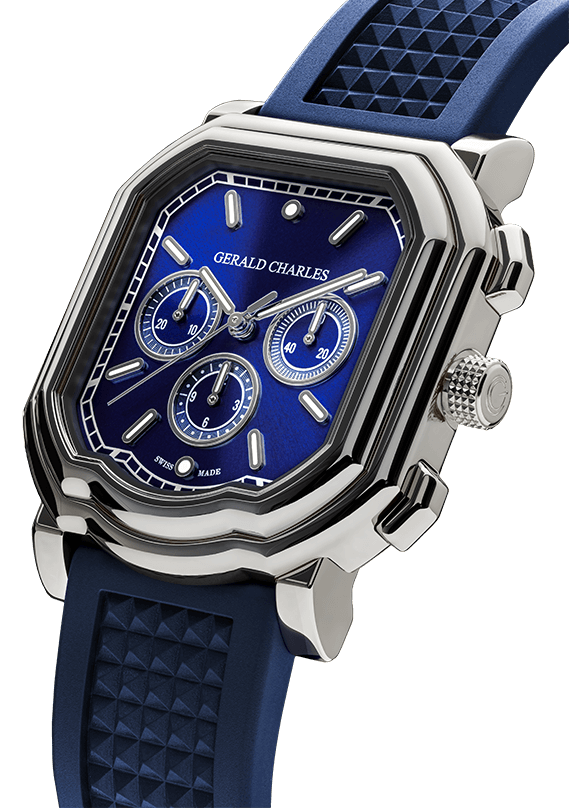




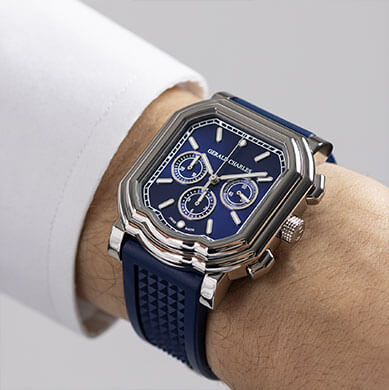




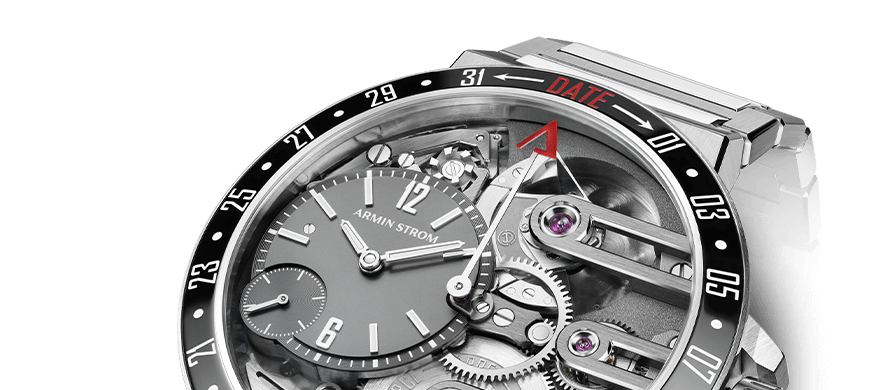
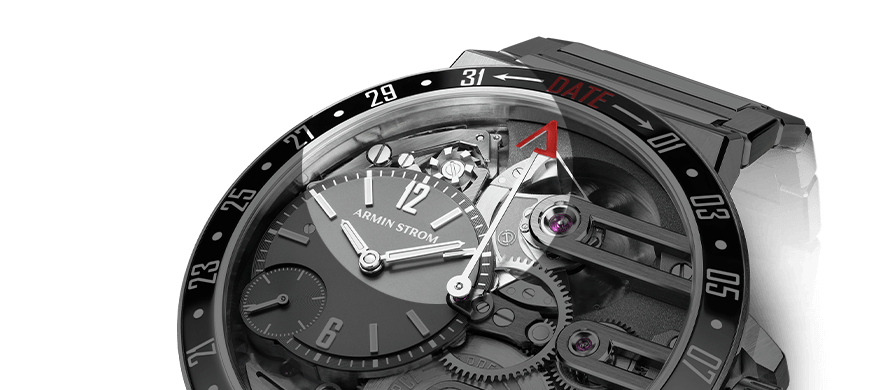


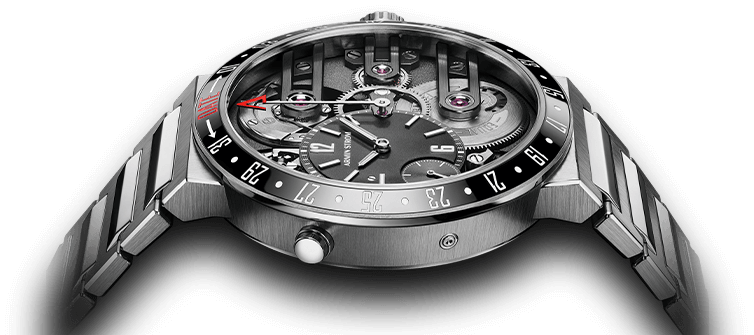

























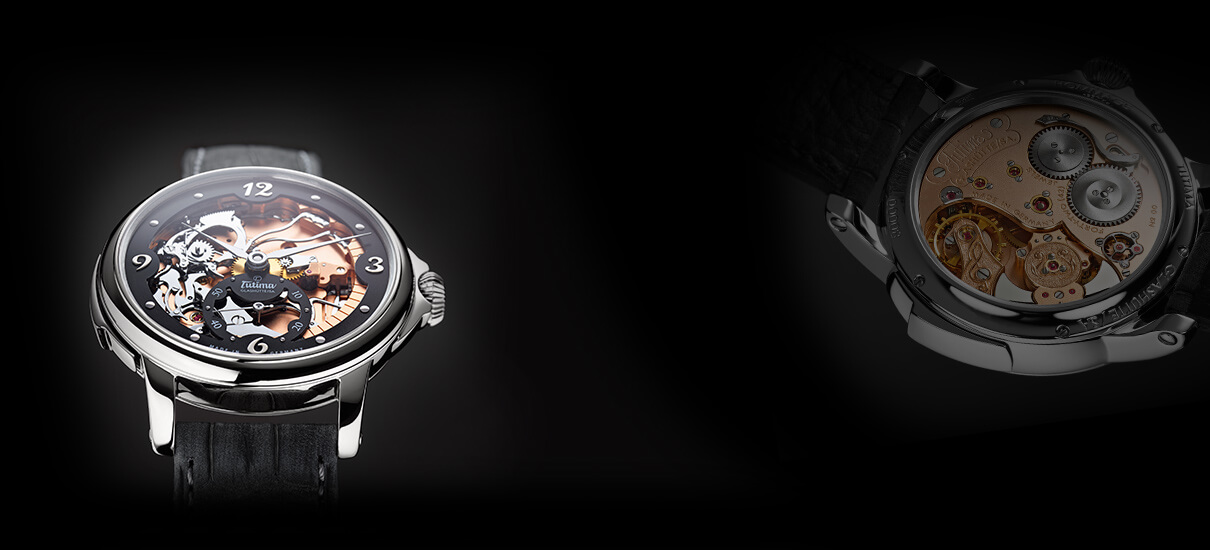



Agree completely the constant gnashing of teeth over this is tiring. You can’t hold back the market. If price and quantities are set artificially low or high, then you end up with exactly what we have – the market will find its equilibrium but in this asinine way where we have a secondary market – grey or preowned or auction that sorts it out with lots of friction and profit extracted by middlemen. If Patek doesn’t like it they should make more or raise prices or set the retailers free as you say.
Exactly, Dave, supply and demand, i.e., the market, sets the prices, not the brands. I don’t see any advantage in a system that both restricts retailers from profiting from in-demand watches and forces them (and collectors) to go outside official channels (gray market) to offload slow moving stock.
Regards, Ian
Its not real supply and demand but market manipulation. All the rare models are more available than ever – just with high markups. There are 5x more offers for rare models than few years ago! Gray market dealers hold the stock and wait for the suckers. They work together at rising the prices (look at each other). I’ve seen instagram videos where gray marekt dealer showed few hudred steel rolexes (50+ of each rare model)!! dealer: holorogymania
google article: “The Real Reason You Can’t Buy a Rolex Revealed”
I remember when rose gold 5711 came out. At chrono24 it was slightly over 60k usd. Steel nautilus was rising fast. As steel 5711 broke the 60k price barier I chcecked prices for rose nautilus and it was marked up to 100k overnight!!! I chcecked rose 5711 offers 9 months later and all the offers were still there + like 3x more new ones. How it is the demand setting the prices? Its all stock holding and greedy markups! And lots off Ad’s work togetrher with gray market deales. They help move unwanted stock -> they get rewarded with rare gems.
The solution to the Rolex problem might just be as simple as Rolex adjusting the ratio of models produced with no need to increase production thus maintaining the brand’s exclusivity. Dealers windows with only different variations of Datejust’s available is extremely boring and will eventually cause harm to the brand
Supply and demand on the nose as you say, and money. A perfect example is the 216570 explorer II (jumbo). In 2019 you couldn’t give it away for €6000, now it goes on the grey for above $10k all day. The reason? Discontinued, even though no one liked it in the first place. Knowing that Rolex won’t make it again makes it desirable. It’s insanity that someone paid half a million dollars for a stainless steel time and date watch. When there are Dufour, Journe, Akrivia, debethune, Laine, Gronefeld, Moritz Grossman, Kikuchi Nakagawa, and the like available for a fraction of the price for similar complications and in precious metals that won’t hit a tenth of the cost of a green item and date nautilus. But, let them spend their money on whatever they would like, it’s not mine.
There’s nothing like telling someone that they can’t have something, even something they didn’t previously want, to motivate demand.
It works on me every day.
Regards, Ian
You can’t like someone’s comment here so I just have to say you told the truth about the greed and stupidity of the low supply watch market !
Congratulations for your brilliant articles. It’s time for the brand to introduce flexible pricing. The merit of Gregory Pau and the bidders have managed to convinced brands to adopt flexible pricing…!
Thank you, Thierry.
The brands like to see exorbitant prices on the secondary market because it gives them more cache. But it’s also a losing business model because they are leaving a lot of money on the sidelines. For example if the new PP sells for $500k vs < 1/10th at retail then perhaps PP should hire some more watchmakers and offer more Nautiluses to the retail public. There’s got to be a better balance…
I’m not at all against brands restricting supply of some watches to boost prices (sales will soon drop if the demand isn’t there), I’d just like it to be done more transparently through retailers than flipping.
Regards, Ian
One can read about the us stock market in the 19th and early 20th century before regulations started being introduced … It wasn’t pretty. Even the current extremely heavily regulated market … has some issues.
Now – watch markets are too small for them to evolve that way. They also used to function reasonably well with grey dealers helping move unwanted inventory at low prices. So what you are suggesting has always been the norm.
What happened in the past few years is that a few players with a lot of cash learned that they can hold inventory, create artificial scarcity and increase prices. There is blatant market manipulation, there are cartels etc.
A lot of the “top clients” who get allocation are associated with dealers. Because of the crazy prices even actual collectors are tempted to make a quick profit. Which allows dealers with enough cash to accumulate even more inventory and continue to play the game with selected brands / pieces.
The only cure is to realize that there are plenty of interesting watches out there beyond a nautilus.
“The only cure is to realize that there are plenty of interesting watches out there beyond a nautilus.” Ain’t that the truth!
Regards, Ian
I like it, I really do. As my search is the PP 5212A, the AD gave me the look when I asked about it. A 35k watch going for 50k in the grey market.
Which begs the question, where did that 50k gray market Patek come from, a flipper or directly from a retailer who couldn’t ask for that price above board?
Regards, Ian
Thanks for suggesting a solution here rather than just complaining about the issue. My thoughts: there are several competing issues at play. Why do brands control prices through the AD network? Because they want to protect the market value of their watches; they absolutely do not want a free market if it causes devaluation over time. The reason being that a significant part of their brand stories are based on retention of residual value; that buyers can at least expect little depreciation. Many luxury watch customers will be less willing to hand over several thousand if they think their purchase will only be worth scrap value in a few years. Perhaps more important than the actual residual value for brands, is perceived value. High perceived value means more customers. The same argument applies to supply & demand. Brands won’t flood the market because exclusivity is part of their brand appeal. The next issue. This is a massive over simplification but let’s assume there are broadly two types of customer for luxury watches, watch nerds like me who love watches for many reasons & ‘watch not nerds’ who are buying just another luxury item to display their wealth (perceived or actual). The needs of the two groups is largely incompatible & depending on the brand, each group has different relative importance. Rolex doesn’t really need to worry too much about the nerds, we don’t represent the largest component of their customer base. However Rolex does need us to say its watches are high quality because this helps brand value in the eyes of the not nerds. The big brands absolutely want demand to outstrip supply but it’s a difficult balance. They need customers to think they have a chance, even if it’s a small one, of buying the watch they yearn to buy. If owning a watch reaches impossibility level, at some point customers may move on to something else. It’s a dangerous game which the big brands are winning for now. Many watch like me nerds are also guilty. I have a submariner for example that I bought when they were less expensive. I love & appreciate the watch as a nerd but I’m also secretly happy that it’s doubled in value since I bought it. I can’t have it both ways, I can’t both want the value that comes with apparent scarcity & be able to buy a Nautilus tomorrow at RRP. As a nerd I’d choose lesser value to be able to buy a Nautilus at RRP but PP isn’t really selling the Nautilus to me anymore, PP has moved on, the Nautilus demand is coming from the addition of not nerds to the nerds that were there before & will continue to be there. So what’s the solution? For me I think the best option is for nerds to buy intrinsically great watches that are available. These may be less popular pieces from big brands, pieces from big brands without the same mass appeal as Rolex, JLC for the example, but also from other newer brands. There are many fabulous pieces out there that aren’t Rolex or PP. And if we sit tight long enough, this bubble will burst & we may be able to pick up a Nautilus below RRP preowned when the not nerds move on.
Brands can’t protect the market value of their watches by setting rigid prices. Just as with the stock market, it’s the secondary and gray markets that quickly reveal how much collectors are willing to pay. I’m all for brands making slightly fewer watches than they can sell so that watches hold (or increase) their value. I’d just like it all to be transparent and run through retailers than flippers and the gray market.
Regards, Ian
Thanks Ian. I don’t disagree with you in the main. Great topic you’ve addressed here.
Another option for those of us who want a very high quality steel sports watch that ticks just about every box is the Octo Finissimo & it can be bought today below RRP. Lots of fabulous alternatives for those who don’t want to play the Rolex/PP game.
I love the Octa Finissimo!
Interesting idea, but what will happen to the Patek market and brand if their ADs start selling Nautilus models for more than the grand complications or rare handcrafts?
I couldn’t agree more! I’m sick and tired of reading comments from all of these people bashing Rolex, Patek, AP, etc. You buy what you like and what’s within your budget. I like the Bugatti but I cannot afford one, so I don’t buy it. I don’t cry over it. It is what it is. What people in the free market are willing to pay is the way that it should be. Great read and thanks for this very sensible article.
Dale mira. Buenas tardes a todos, amigos.
Me voy a limitar a Rolex para ser mas conciso en mis planteamientos. Estoy de acuerdo con su idea para derrumbar la especulacion, Siempre me ha intrigado el exito de Rolex que motiva esta especulación. Me parece logrado mas por tecnicas de mercadeo que por meritos propios.
Mi primera lectura es que Rolex ha hecho muy bien la tarea precios, al barrer desde los 4800 hasta 45000 sin dejar un vacio, se ve que cualquiera que sea la cifra que usted disponga en ese rango, hay un Rolex esperando por usted. De ahi en adelante solicite y espere con mucha paciencia.
Sabemos que muy poquisimas marcas de relojes han conseguido hacerse de una reputacion tan solida como Rolex. Considero que en esta es mas raro aun, sabiendo que casi todos sus avances estan enfocados a lo interno de sus excelentes calibres y sus diseños externos repetitivos que dicen claramente la frase «¿Si triunfó, porque cambiarlo?» aburren desde hace muchos años. En Patek que tambien lo ha logrado por ejemplo, lo veo mas fundamentado, sus bellos relojes tienen mas variedad en los diseños y complicaciones asombrosas. Aunque se repite el patron con el Nautilus. Parece ser que la otra gran baza de Rolex es su increible y masiva capacidad de producción, cuando sus rivales tienen partidas mínimas en cantidades que no asombran a nadie, Rolex alcanza cifras de produccion de unidades que espantan de pensar como pueden vender todos esos relojes con los precios que tienen. Hay una verdad innegable, sus relojes son muy buenos en cuanto a fiabilidad y durabilidad. Casi eternos. Dicho todo esto voy a mi opinión: No me gustan los Rolex, los encuentro muy sobrevalorados, no me gusta ninguno de ellos, ni sus divers incluso, con lo fan que soy de ese sector. Reconozco que son una buena inversión a mediano y largo plazo, pero para mi, quiero un reloj que me guste, no que me haga ganar dinero. Sus sosos diseños enquistados en el tiempo no me motivan. No es cuestion de precios. Un reloj me llama por su diseño o por sus recursos. Rolex no tiene un diseño que me llame, y carece de recursos motivadores. Por ejemplo, no existe un repetidor de minutos en Rolex, O sus diver no miden profundidad. No hay un Rolex con altimetro. Ni siquiera es verdad que fueron los que hicieron el primer reloj de buceo, Junto a Blancpain sacaron su primer diver en 1953, pero solo el Fifty Fathoms tenia bisel unidireccional y se podia utilizar de forma segura para bucear con aire comprimido, en aquella version primigenia de Blancpain. El de Rolex solo era un reloj que aguantaba sumergirlo pero no era un diver de verdad. No le deseo ningun mal a la compañia de la corona, han trabajado duro y se merecen el lugar que tienen (Estar en la mano de un ejecutivo desconocedor de las magias del mundo del reloj, o en el cofre de un especulador salvo raras excepciones) pero si le advertiria si tuviera la oportunidad de conversar con sus directivos, que se avecinan tiempos convulsos,
Se les está derrumbando la casa por los cimientos y no se dan cuenta. El mundo ha cambiado, pero la industria de los relojes elitista, no se ha dado cuenta que tienen que adaptar sus instrumentos y precios a nuevas necesidades y público.
Vi un video en el canal de Teddy Baldasare muy explicativo: A unos millenials se les muestran relojes de todos los tipos y les preguntan si conocen la marca y cuanto creen que valen.
Pues responden que el Blancpain FF «tiene aspecto de reloj barato», para otros Rolex no existe pues no la conocen, y de los precios uffff. A los milennial, un reloj de 2.000 $ ya son el top del top. Cuando les dicen los precios, sus caras lo dicen todo, y hasta se llega a escuchar «24.000 $ por esa mier….?»
Pues en ellos está el futuro, que se lo vayan metiendo en la cabeza, los jefazos en Suiza, porque se les puede caer uno de los pilares de la economía nacional con el cambio generacional. No se pueden tener relojes de entrada a 4.800 € como estos Rolex baratitos y pretender tener prosperidad con las nuevas generaciones, vendiendo unos engranajes para medir tiempo a precios inflados, que ya no son necesarios como tales.
Excelente artículo.
Muchas gracias por el espacio.
Coño!!! Hablas español perfectamente!!!!
But a Bugatti while expensive isn’t doubling Orin price (I don’t say value) every few months. It’s just an expensive product with a set expensive price.
Maybe I’m missing something, but I don’t think this solves the problem, it merely moves it to a different point in the supply chain.
If retailers are setting their own prices, selling less popular models below retail and more popular models above (at ‘market values’ as vague as they may be) how are they any different from any other grey market dealer? Surely this merely creates a more official grey market with one further downside.
That downside is that some watches are available to the average watch enthusiast at retail. Sure, not many of us are lucky enough to get that dream watch that is so hard to get, but some do. Some wait on lists, build relationships or work hard to acquire this timepieces at retail. If you turn retailers into grey market dealers this stops. No one gets desirable watches at retail. Everyone pays over the odds, except those who can’t afford the crazy premiums. For them there is no hope.
I don’t like the grey market anymore than the next person and I’d love to see a workable solution to it. Unfortunately, I don’t believe this is it. I think it would make a bad situation worse.
I don’t get it why anyone calls this a “problem”. It is what it is. Supply and demand. It won’t last forever. The truth of the matter is that there have always been watches that trade above retail. As far as the grey market goes, I have no problem with it. It’s funny how nobody talks about (before this crazy time) that it was the grey market where you could actually get great discounts on high end brands (Cartier, Panerai, Breitling, etc). It works on both sides of the spectrum. There is no “solution”. It is what it is.
I don’t disagree. No one takes issue when grey dealers offer discounts and you can’t have it both ways. I guess the “problem” comes when prices are artificially inflated by the grey market. There are many watches where supply is ample, if not sufficient, but many/most are in the hands of the grey dealers. That said, if the overprice you’d like to think no one will pay, driving the price back to Earth.
My main point was that the proposed solution wouldn’t work. Where supply falls shy of demand (by chance or design) there’ll be a premium. All that’s left to decide is who makes the profit
The problem lies squarely at the feet of three factors.
1. First and most importantly, the vast increase in inequality in many societies. Over the last thirty years, the bottom 90% of citizens in The West have received precisely zero share of the enormous increase in generated wealth. This has resulted in a whole lot of excess cash swimming around in bank accounts.
2. Fora such as this. While Q&P is by no means the worst offender, the constant (and often shameless) pushing of a handful of brands can lead many people to believe “You can’t be a true watch guy without these three watches”.
One… esteemed publication actually had the gall to cite The Rolex Datejust as “An everyday watch for an affordable collection”.
3. Profiteering from watch companies.
And of course
4. The incredible ease with which a flipper can find a buyer through the likes of chrono24.
http://fr.worldtempus.com/article/auctions-how-top-watchmakers-intervene-in-auctions-1842.html
And I don’t think retailers have the prices set for them by the brands so much as it’s an agreement that allows both the brands and biggest retailers to make the ideal margins, and smaller fish swim happily in the wake. Don’t feel too much sympathy for someone already making 40% profit margin on the rrp.
But it’s all fine by me.
The price of watches is set to maximize profit in an international market with wildly different national tariff schedules. “Flipping” is nothing more than the individual participation of gray market profiteering. There are several chapters dealing with the economics of this in Chevalier & Mazzalovo’s “Luxury Brand Management.” The fashion industry addresses this issue by presuming one third of any season’s product will sell at retail, one third will sell deeply discounted at outlets and clearance houses, and one third will be destroyed. The watch and jewelry industry, on the other hand, is not in the habit of clearing or destroying stock because watches and jewelry have a hold horizon longer than a season. As a result, price controls and dealer constraint have been the mechanism whereby manufacturers protect a business model where a watch that costs $2000 to manufacture pays 40% tariff in Paris, 70% tariff in Tokyo and 20% tariff in Singapore.
It’s no surprise, then, that the manufacturing industry most gleefully adopting to blockchain tracking is watches. For Breitling, Vacheron, Audemars, DuBuis and yes – MB&F – the gray market is now a choice rather than a requirement of business. If people are flipping MAD1s, it’s because Max Busser views it as his customers’ privilege to do so.
I was visiting a jeweler in santa Fe new Mexico. Right on the plaza. NOT A ROLEX AD. In the window there were two subs with the green bezel, ceramic, two GMTs on the jubilee bracelet, a newer sub, a sky dweller, a Daytona and a few other Rolex’s.
Inside the store underneath the glass case. There were 8
Oysters with the different colour dials, a brand new sub never worn, two more GMTs on jubilee bracelets along with some other Rolex’s.
Now tell me how this dealer from the middle east had more GMTs, 8 oysters with the different colour dials with along with two subs. I don’t know of an AD in the U.S. that has that many Rolex’s at the same time! These middle eastern dealers that have the Rolex AD. Their Rolex’s go out the front door, back door and side door all being sold to close family members in the watch business. That’s a fact. If these greedy gray market flippers could turn three thousand dollars by selling lawn mowers, then they would do it. I’ve lived and worked in Saudi Arabia.
These guys have been selling for thousands of years in markets. For them it is just business. Cagey sneaky dealers. I have been wearing a Rolex GMT for 54 yrs.,
And what I see happening today makes me want to spit up. You have to be frigging out of your mind to pay $20,000 for a GMT or $15,000 for a sub. Are you that crazy or down right desperate. Go out and buy yourself a new car.
I believe that many “premium” retailers are as unhappy about the situation as we are. It must be terrible to have nothing their customers want AND be saddled with a load of diamond-encrusted monstrosities that they can’t get rid of.
Hey Tam, how’s it going?
That is indeed an unfortunate effect, but it depends on whether there is a buyback contract agreed with the brand; I think there very well might be in some of these cases. Of course, after x amount of years of a retailer taking advantage of this, increasingly unable to shift certain models, it will spell the end of a continuing relationship with the brand, so I understand there’s more pressure year after year to sell the softer pieces.
Dear Ian,
I agree with you. I do think that the liberalisation of the market will help stop this crazy phenomenon.
I would propose to auction all the hot pieces directly, not even by retail, but by the big auction houses. This move will stabilize the market in no time. The watchmakers will be rewarded for their work, the collectors will buy only what is real (dictated by various factors: rarity, horological value, fashion and so on).
Why? Because it hurts to see some people getting rich by chance (don’t get me wrong, I wish that everyone get a wealthy life) while the watchmakers are forgotten (from the financial perspective).
Am I so wrong to think like that?
Or even a brands’ centralised bid system, so the AD could not influence or favorise certain clients (that might flip the watch afterwards). The brands will only have to gain from their rare pieces and not some third or fourth party…
Cheers,
Andrei
The watch market for the more desirable watches, is not currently operating in true free market fashion. Supply & demand are but a few of the variables. Access to the market is incorrectly defined by commenters.
Just because you have the means ($$) doesn’t mean you can participant!
The Rolex dealer is selling out the back door to the grey market guy and receiving cash above retail for that access. The auction house is cutting a deal with the grey market seller, for access to – guess what? – the new Patek Nautilus w green dial (upcoming Phillips Auction).
You and I, even with the means, we really not free to participate. We are invited to do so.
Other industries with products in exceptionally high demand, still controls pricing, and have created retail distributors who truly provide access to all. We don’t see this type of market dynamic an Apple Watches. Demand is high, prices are firmly set, and reseller’s priced are monitored. Grey market pricing is not an issue.
The Swiss watch industry has the ability to do the same, yet has chooses not to. Rolex is more worried about the value of a new Daytona reverting to its retail price.
Personally I don’t see any problem with the current state of Flipping and the Grey Market. Let the sheep pay multiples for mass produced industrially made watches. Perhaps one day they will wake up and realize they let themselves become brainwashed. We need to remember that 99% of those who could have had one of today’s hot watches 5 years ago didn’t because back then it was ‘just another watch’. I do feel a little sorry for the not so rich novice whose dream was to save up enough one day for one steel Rolex and call it a career, but for anyone who professes to really know watches there are literally thousands of incredible pieces out there to be owned at extremely fair prices.
Lots of people have already moved on.
I believe Omega have profited mightily from the arrogance of Rolex.
Not to mention GS.
I think this article makes some very valid points, and I want to offer a different solution that I think will work as well or better. I fully understand that demand is high, but the supply is only limited at the authorized dealer level. Just go online to any gray market dealer or eBay or Chrono24, and their is plenty of supply – just at a price well over retail! The real shortage is caused by high purchasers at the AD who get access to as many high demand watches as they want. My solution is straight forward, practical, and helps the brands build a direct relationship with the customer, and keep the AD relationship too. The ultimate solution is for manufacturers to allow the client to order direct from the manufacturer over the Internet, and have the client pay and pick up the watch through an authorized dealer nearest them! The benefits of this model for all parties concerned are as follows:
1. The brand manufactures the correct number of watches that are pre-sold. The brand could even take a deposit to order the materials which improves their cash flow too.
2. The client is happy because they get the watch they want in a timely way – even if the wait may be a year or two.
3. Flipping is discouraged because the manufacturer will not allow a client to buy as many as they want like an AD does today. Plus the brand knows that the watch will go to a client, not a flipper nor sold out the back door to a grey market dealer.
4. The brand picks up NEW satisfied clients who will WEAR the watch on their wrist.
5. The brand will not be tarnished by customers who walk out of AD’s pissed off for being denied the watch they want.
6. The brand builds a direct relationship with the client & builds true loyalty!
I would love to hear feedback on my solution. I understand brands like the high demand for certain models (snob appeal), and are not going to overbuild to satisfy this demand. My solution would give more new clients a chance to get a highly desired watch without getting the run around from the authorized dealer. Everyone wins!
So many good comments. Quite a few “solutions to the problem” too.
And how many YouTube videos have been made on this topic?
But no-one asks (far less attempts to answer) the obvious question.
Would any capable and educated watch dealer sell a £20,000 watch for £10,000?
Of course, they wouldn’t!
But Rolex do precisely that! Or do they?
Does Rolex actually sell (many of) their watches at around half the price they could achieve?
The very clear and obvious answer is Yes.
In reality – it is no. Rolex are nobody’s fool.
Take 1,000 would-be buyers of the Rolex Steel Daytona at the UK RRP of £10,500.
These are:- preferred clients, people on waiting lists, people who ‘register an interest’, people who enquire.
How many (out of 1,000) would still wish to buy if the RRP was £25,000?
(£25k is lower than any of the 20 brand new, 2021, 116500LN pieces currently listed on C-24 from UK vendors).
Immediately rule out anyone who is buying to flip. Also, rule out anyone who is buying simply because a £25k watch for £10k is irresistible. Rule out anyone who objectively analyses which Chronograph is the best. Or who objectively analyses which Chronograph is the best value for money.
The 1,000 doesn’t just reduce – it vanishes. There would be hardly any demand.
The entire “wait-list, grey market, flipping” paradigm is no accident. It is deliberately planned and practised – by Rolex.
It ensures that they sell their full production, at full list price, of all Daytona pieces. It also spreads into other steel sports. And in the past year other pieces have followed suit – even the humble Datejust and coloured OP’s.
Zenith can’t sell all their El-Primero’s at full list; Omega can’t sell all their Speedmasters at full list.
Almost every manufacturer apart from Rolex and Patek Philippe has to discount to clear their stock.
There are no solutions because there is no problem. At least, not in the view of those who control the game!
Rolex and Patek prices are directly linked to the central banks of the world such as the US Federal Reserve.
The price of money (interest rate) is manipulated by governments with an agenda to keep unemployment low. But everything in life comes with a trade-off, the trade-off for low interest rates is that savings goes into risky asset classes because when interest rates are near zero it makes no sense to put it in safe assets that don’t keep up with inflation. So like the plumbing in your house, liquidity (extra cash) has to go somewhere, so it goes into real estate, stocks and collectibles like art or watches. This artificially raises the prices (inflation) of these assets. I own a Daytona panda that I never would’ve bought at the price I paid if I weren’t reasonably certain it would retain its inflated value. I love the watch because I’m a collector, but these prices are insane but everything that has value today is insane, not just watches. As long as interest rates stay low, the market will go up, the Fed has signaled it won’t allow any failure in the free market. If you have money, you’ll do well, if you’re struggling to pay your bills, your future is screwed.
Great insights on the complexities of the watch flipping market! I appreciate the tips on how to navigate both flipping and the gray market effectively. It’s refreshing to see a discussion that encourages responsible collecting over short-term profit. Looking forward to implementing some of these strategies!